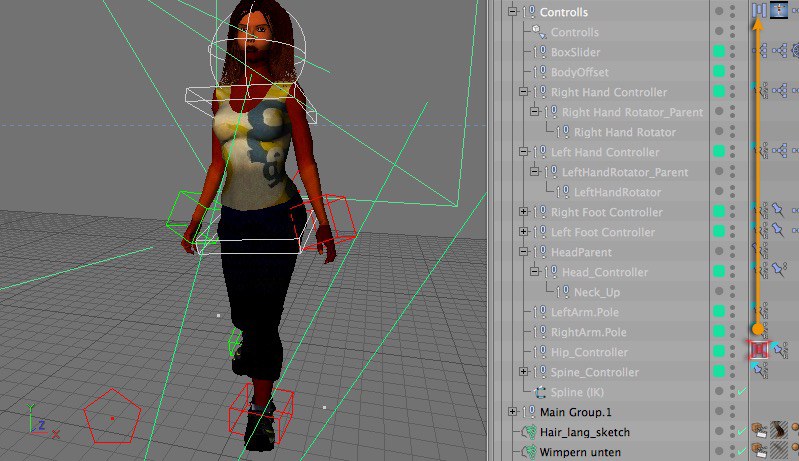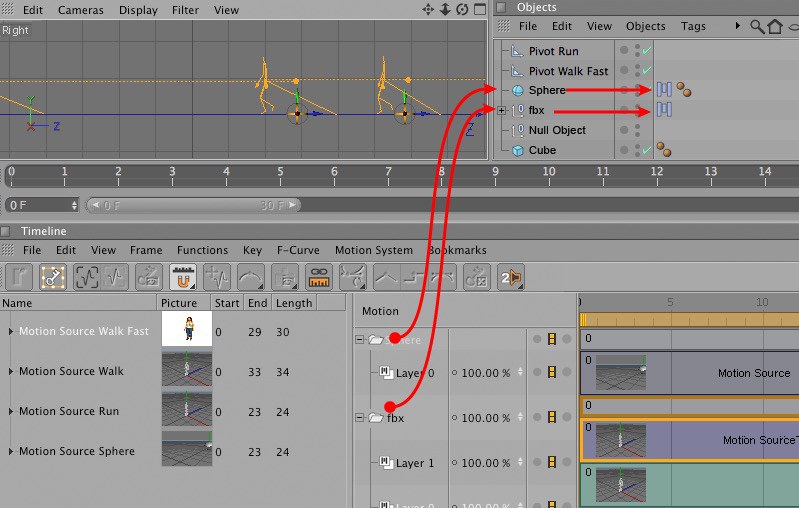![]() Motions
Motions
Motions
The Motion System tag is the core of the new Cinema 4D R11 Motion System. This tag will automatically be assigned to the active object once the Add Animation Layer, "Add Motion Clip" or "Add Empty Motion Layer" command is selected from the Cinema 4D Animation menu. Alternatively, the tag can be assigned directly to an object in the Object Manager via the context menu or the tag menu.
The Motion System tag sets itself apart from other Cinema 4D tags in that it affects not only the object to which it is assigned but the entire object’s hierarchy as well. This makes it possible to easily mix animations containing complex hierarchies. There are, however, some things you have to be careful of. If a Motion System tag is assigned to an object that is part of a hierarchy that already has a Motion System tag assigned to it, unwanted results will most likely be produces. Therefore, such a setup should be avoided.

You should also avoid modifying a hierarchy to which a Motion System tag has been assigned. In most cases, such a modification will corrupt the recorded Motion Source and Animation Layers. Therefore, make sure the hierarchy used for the animation is planned well in advanced.
Another distinctive feature of the Motion System tag is that it is displayed as a folder, named after the object to which it is assigned, in the Timeline when in Motion mode. All Motion Layers and Animation Layers that belong to a given Motion System tag are also contained in this folder as subordinate elements. If this folder is selected, all parameters for that Motion System tag will be made available in the Attribute Manager, just as they would be if the tag itself were selected in the Object Manager.
